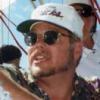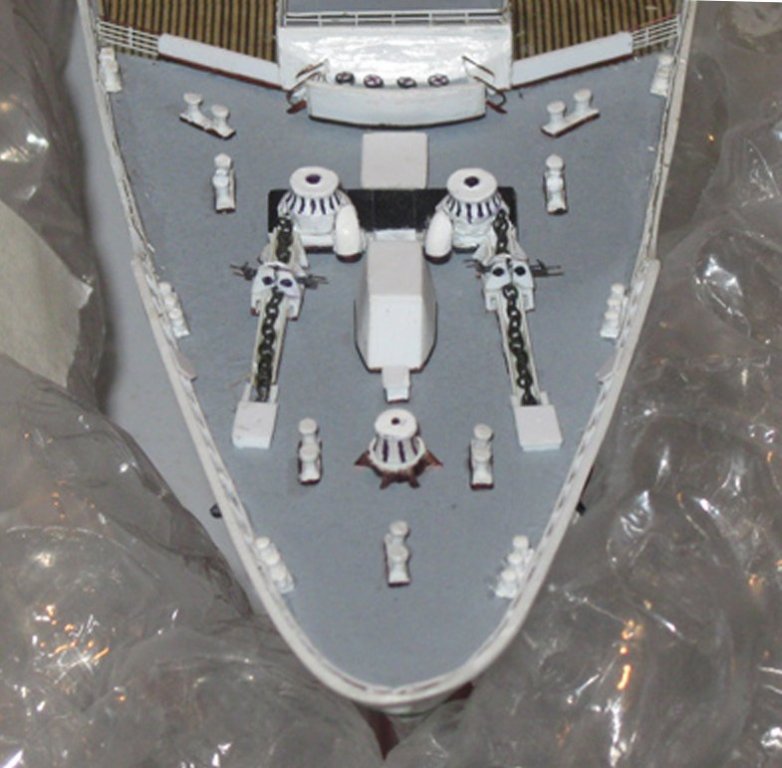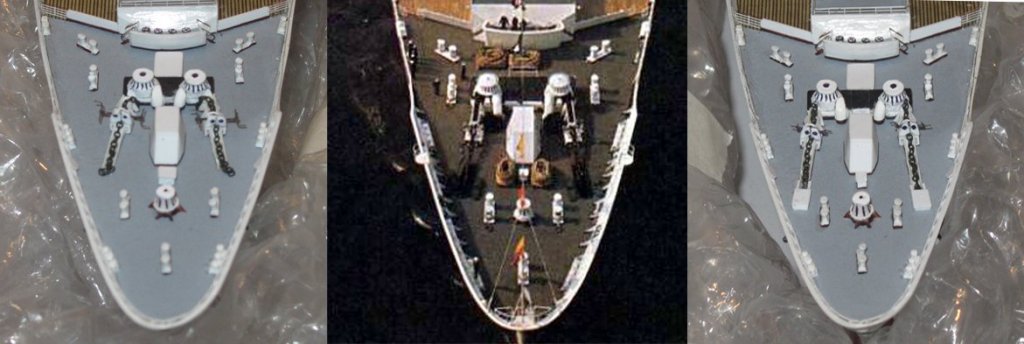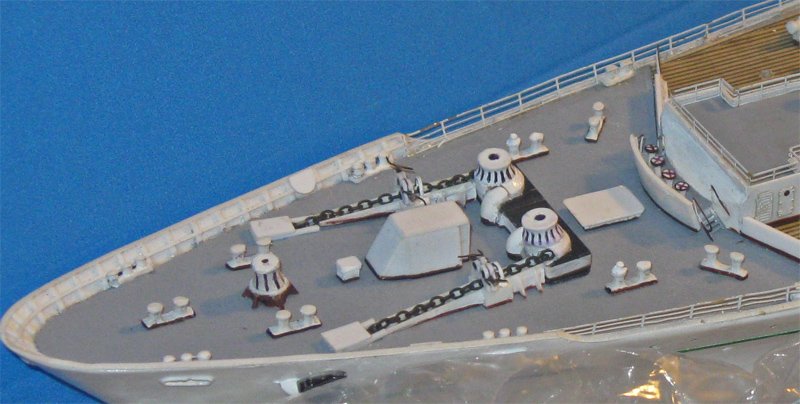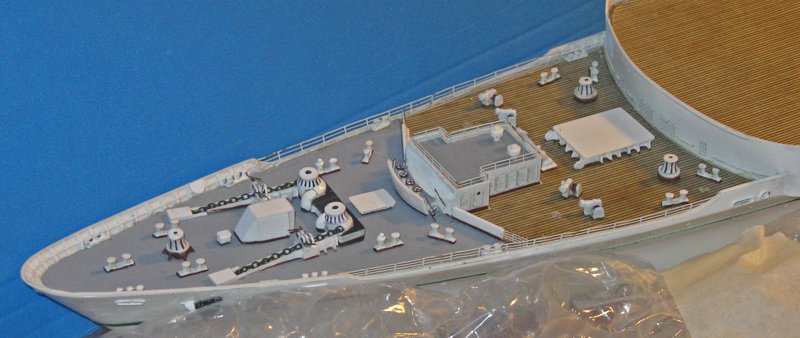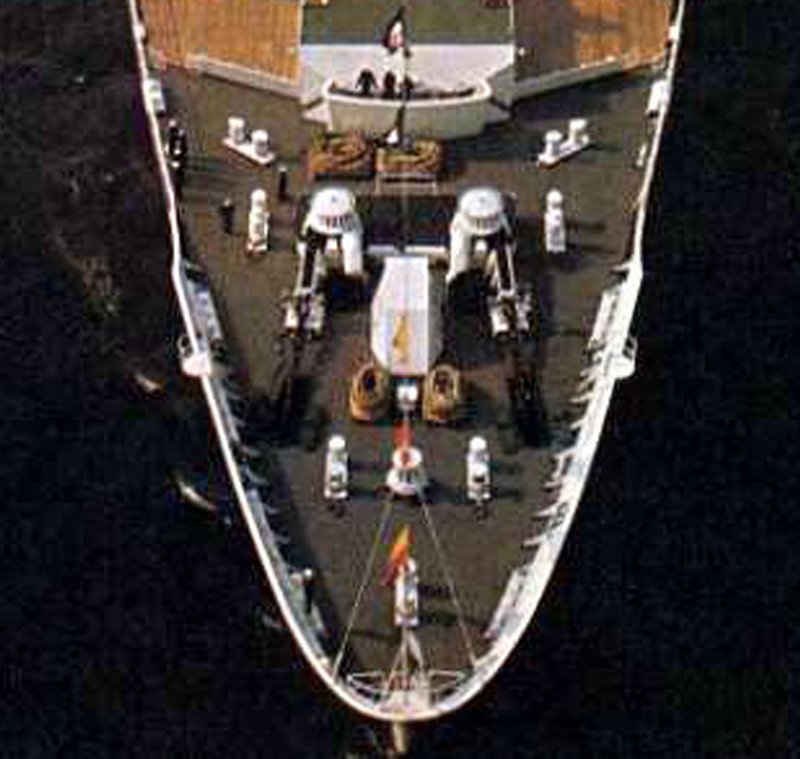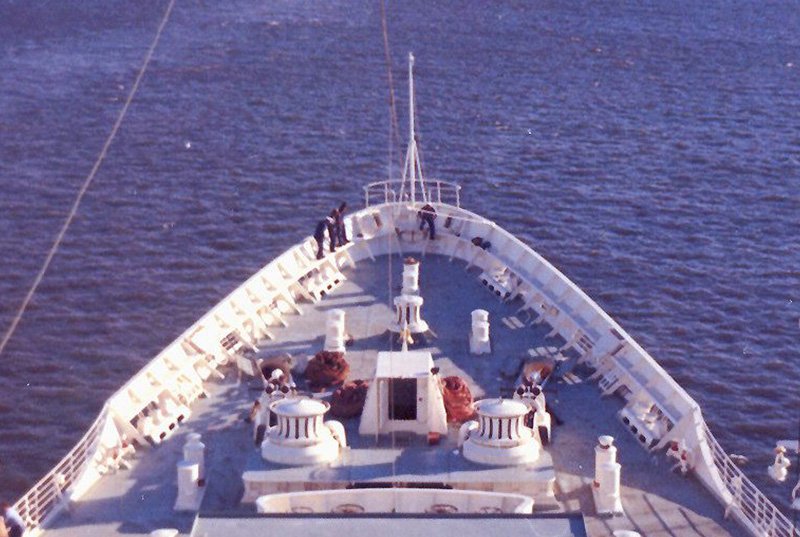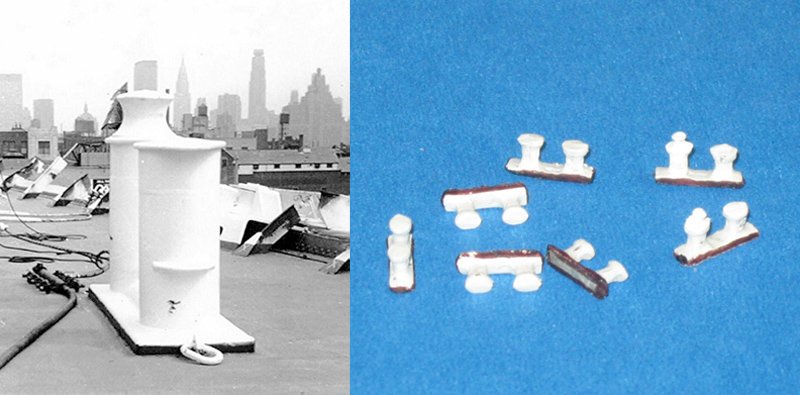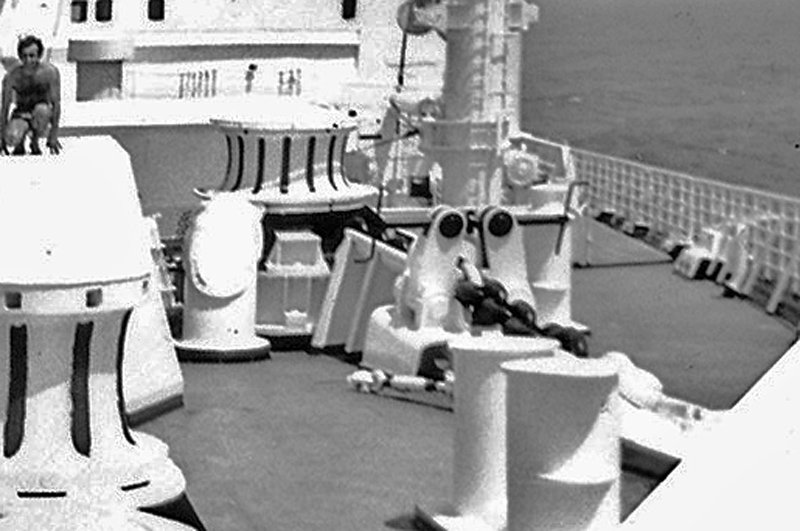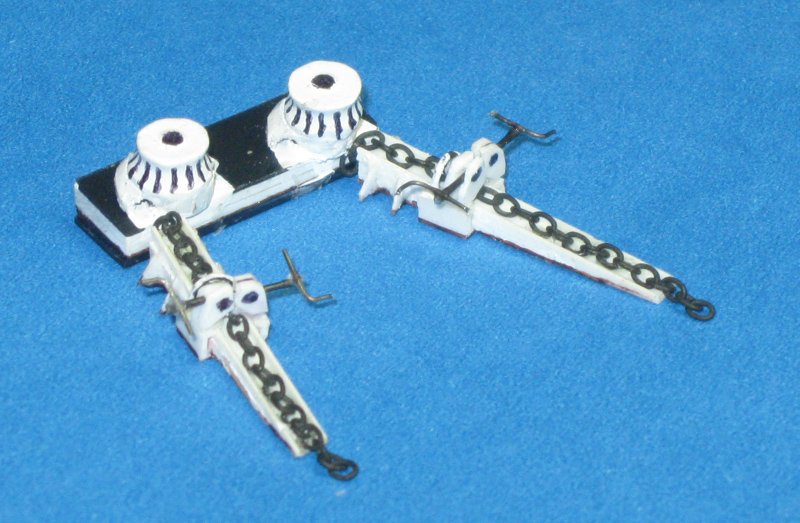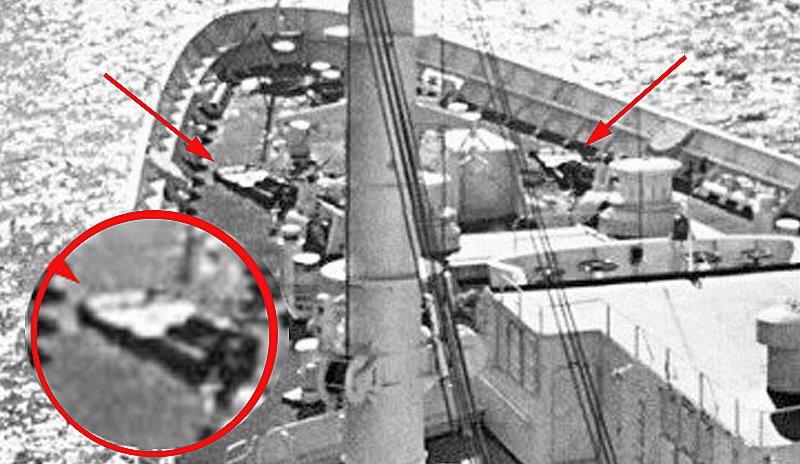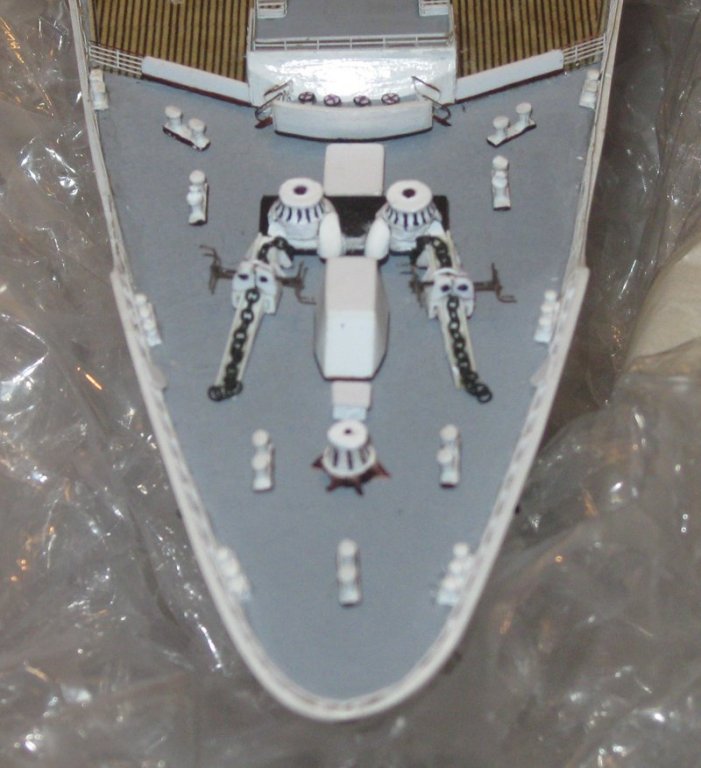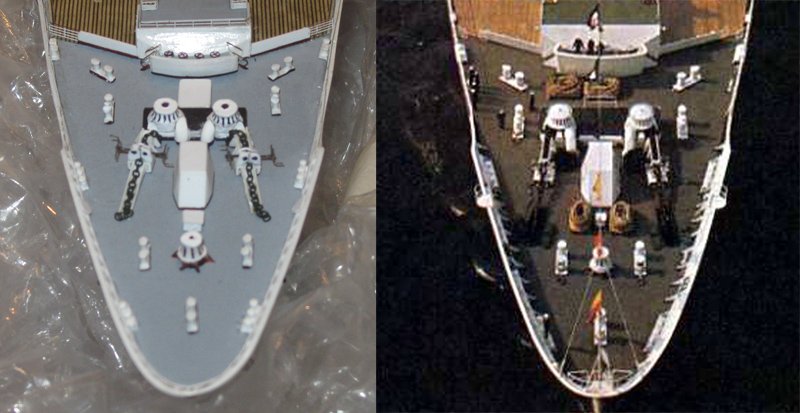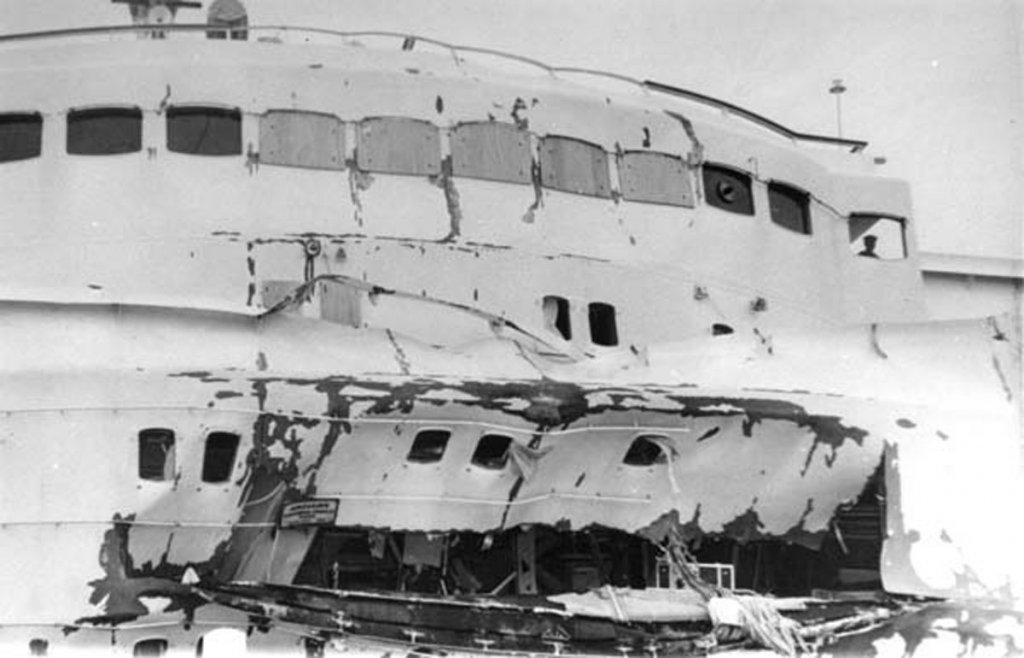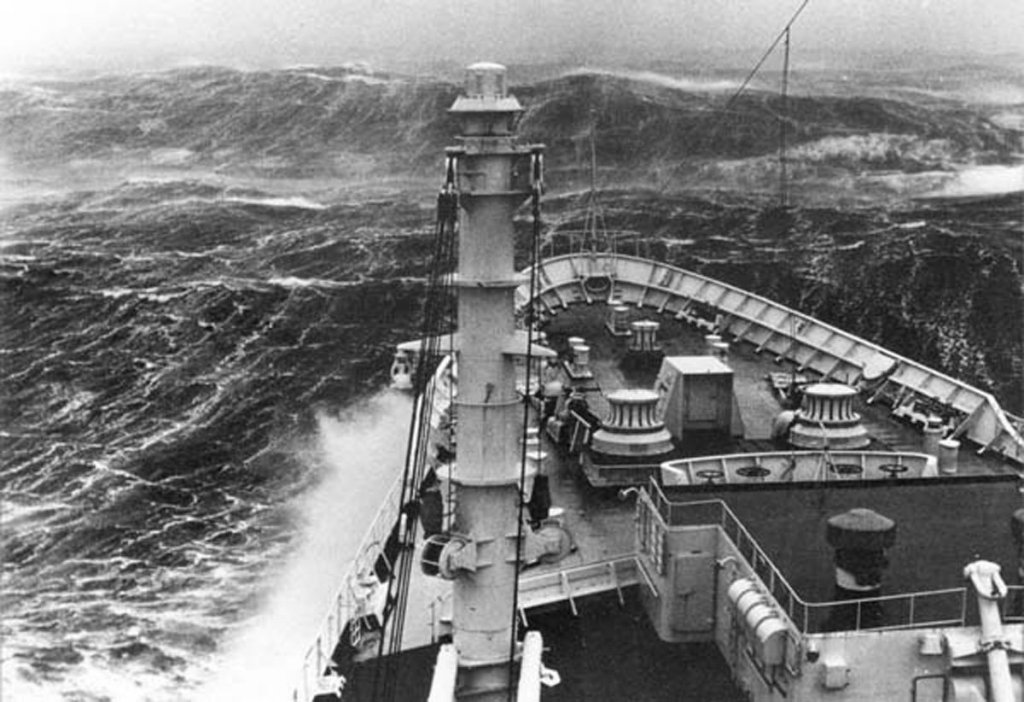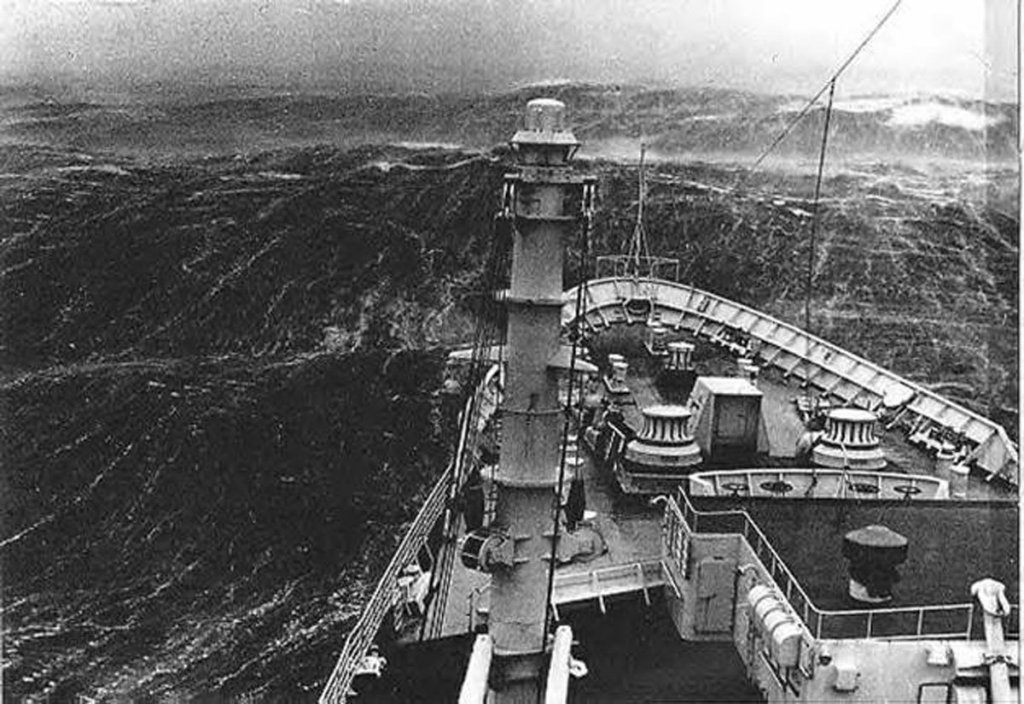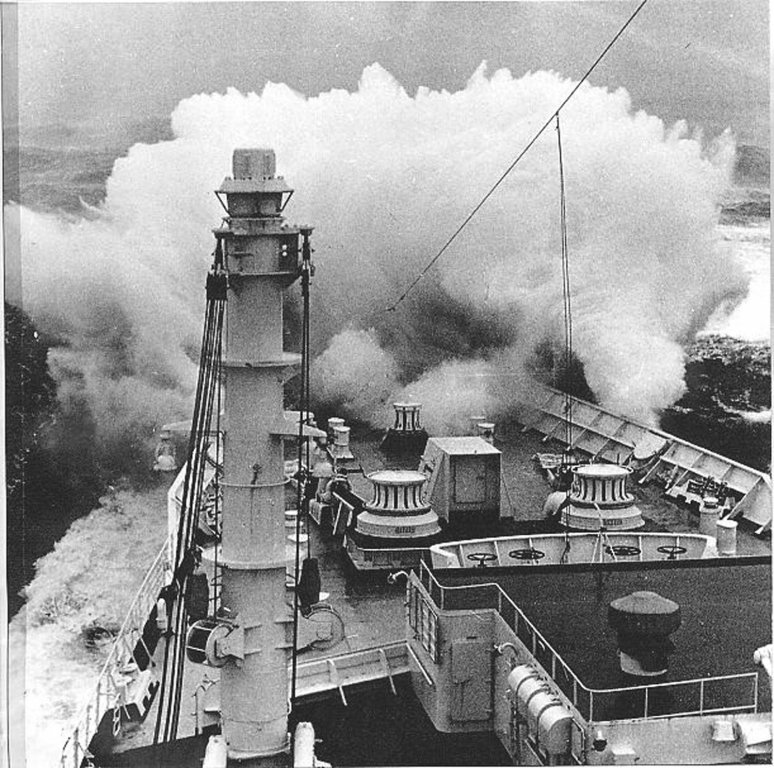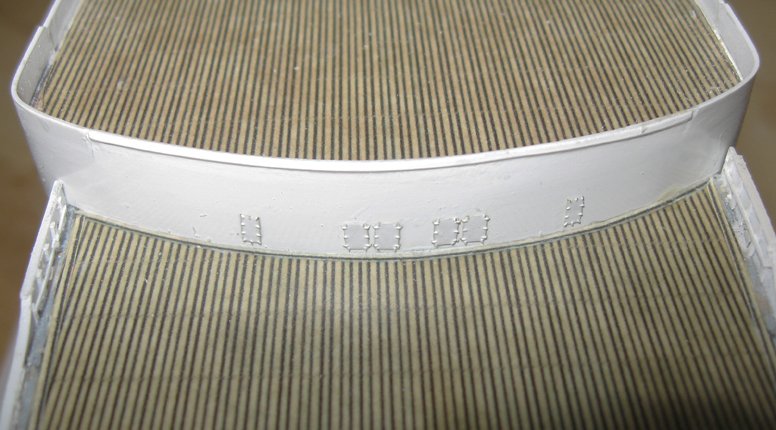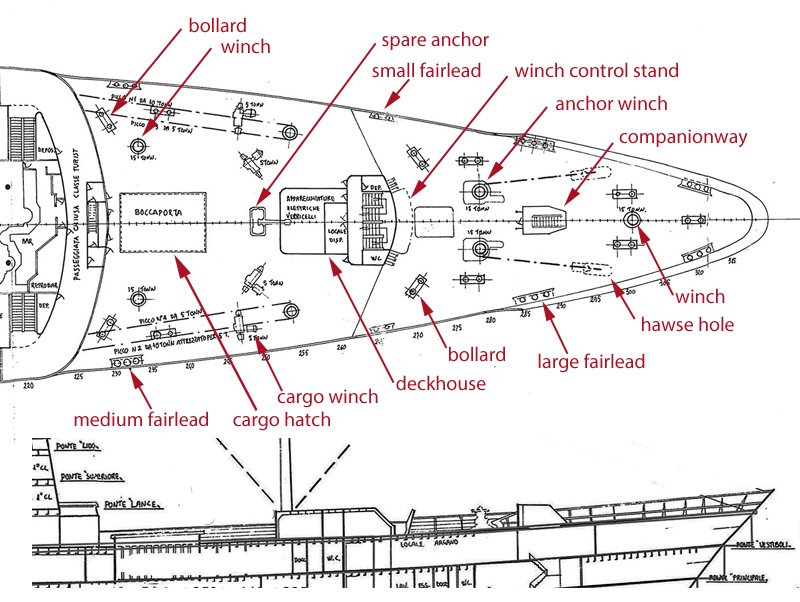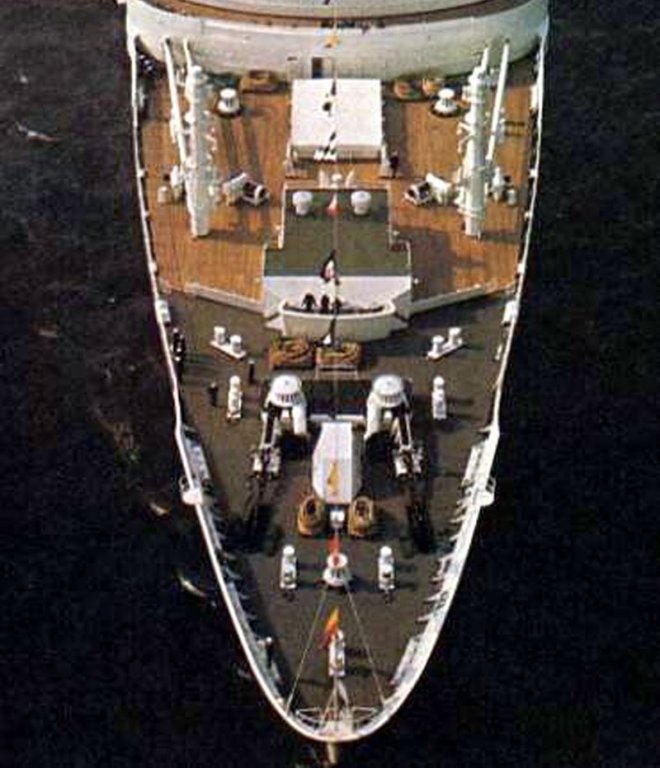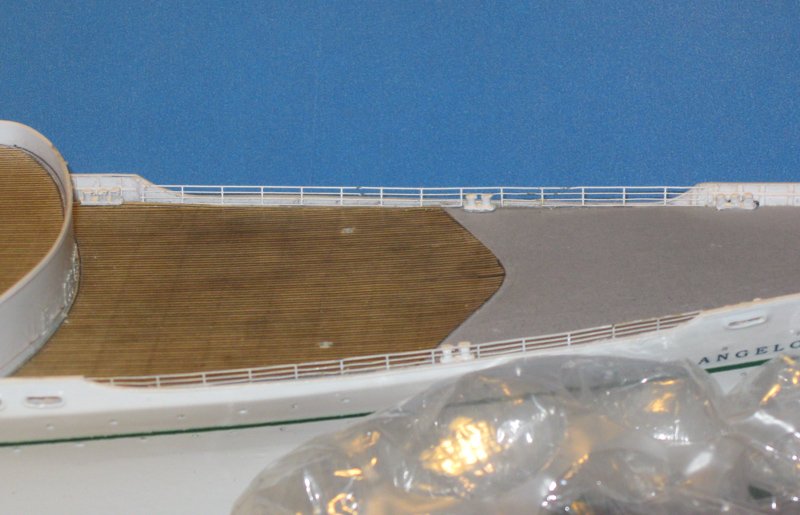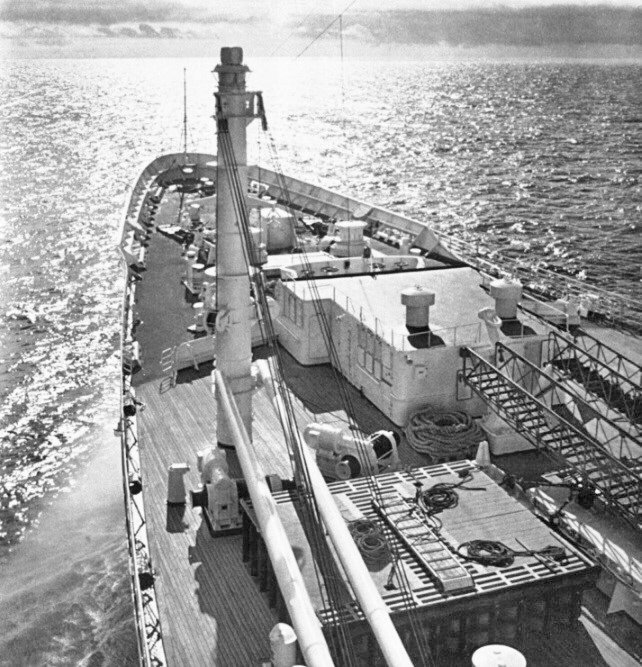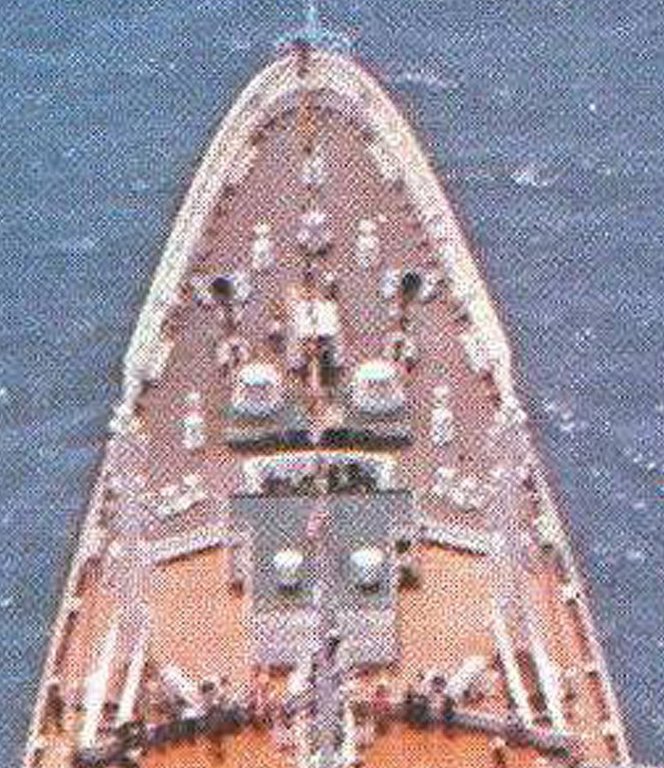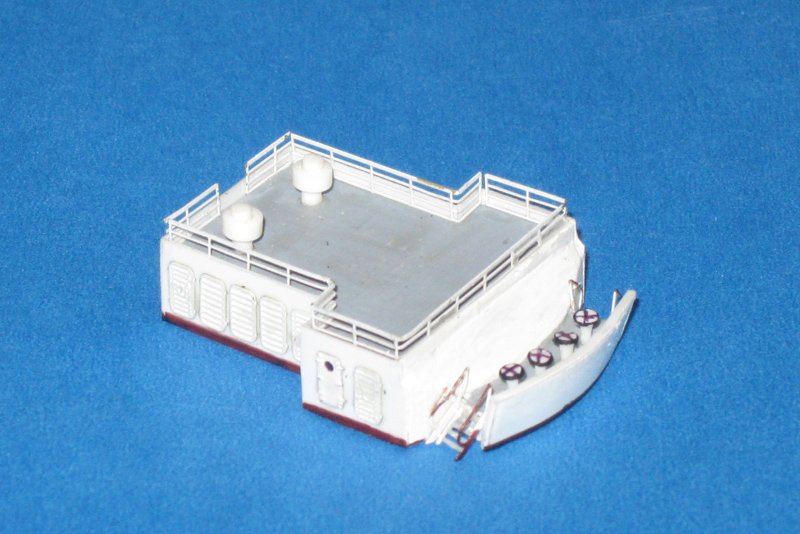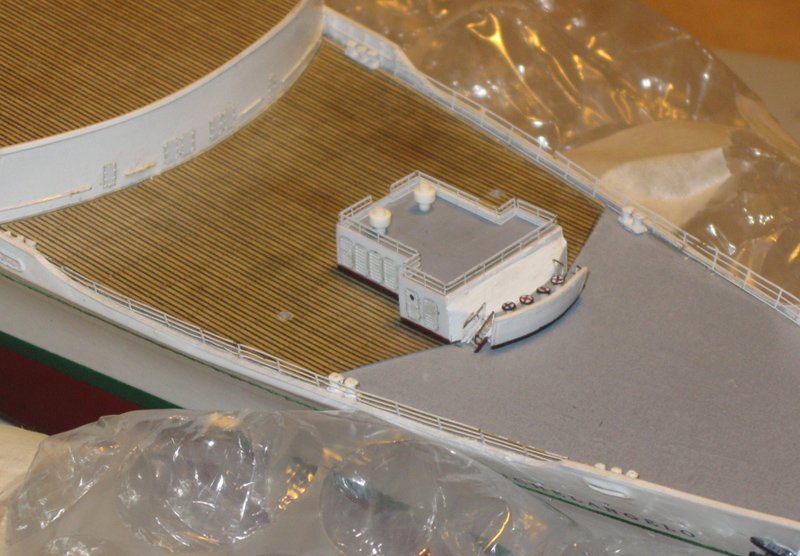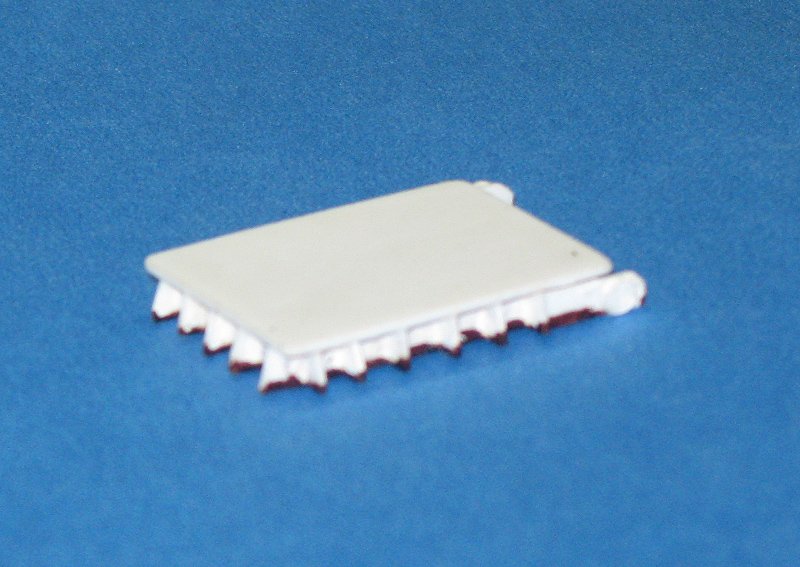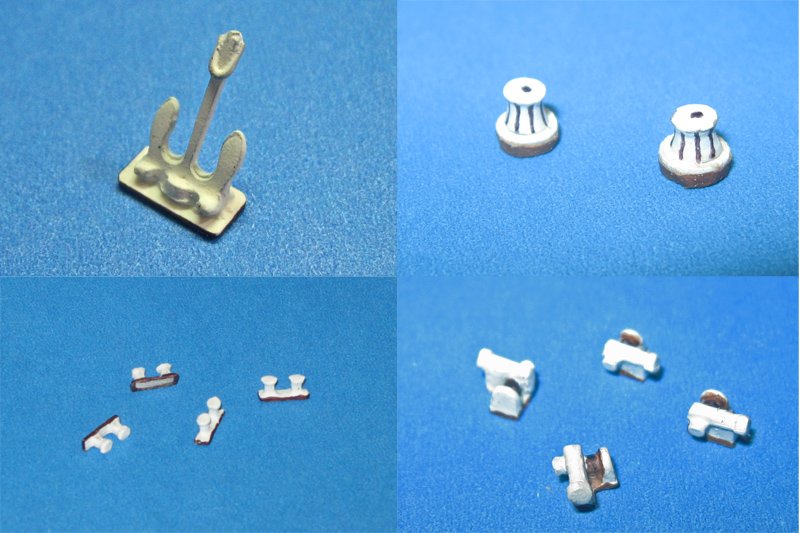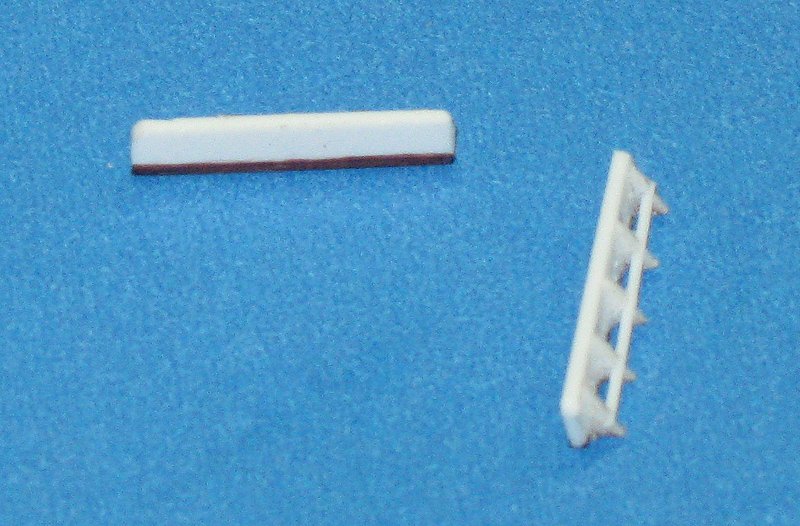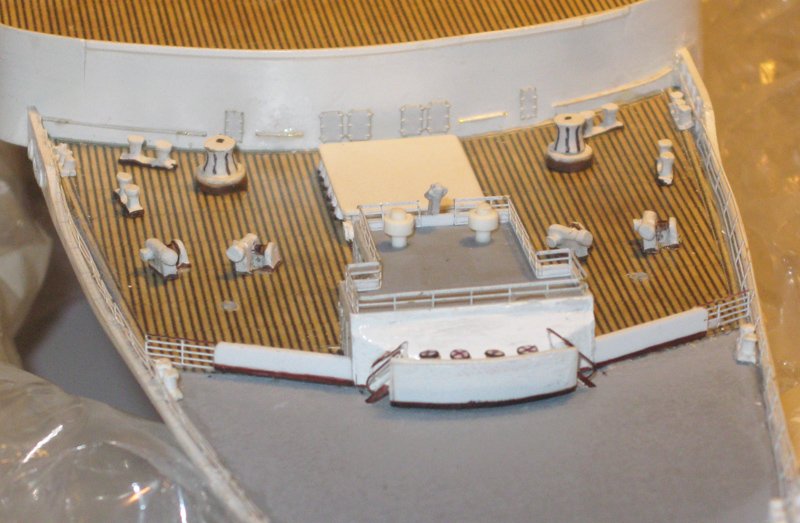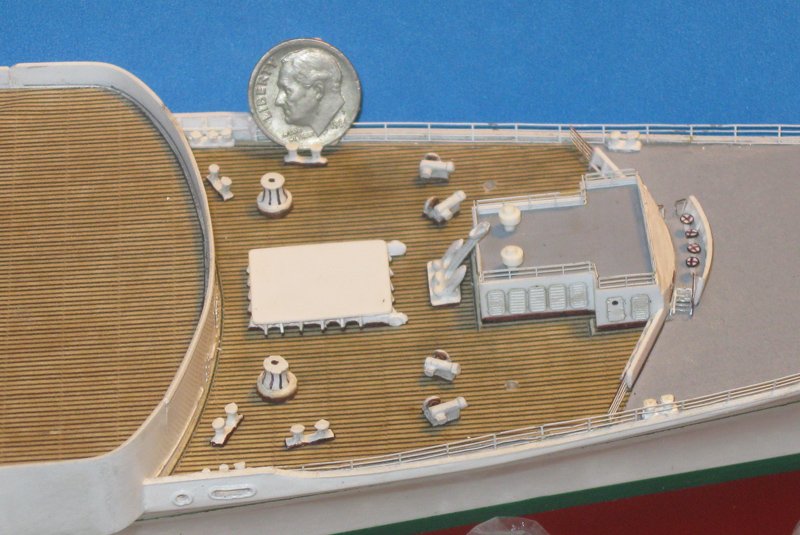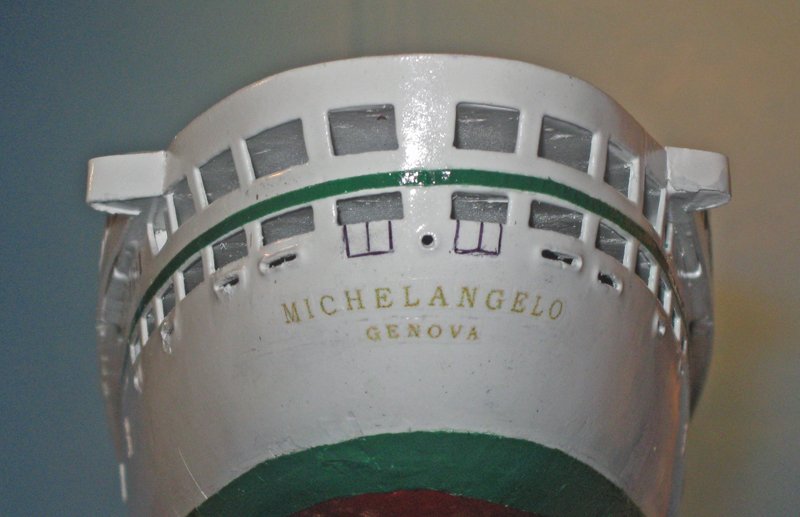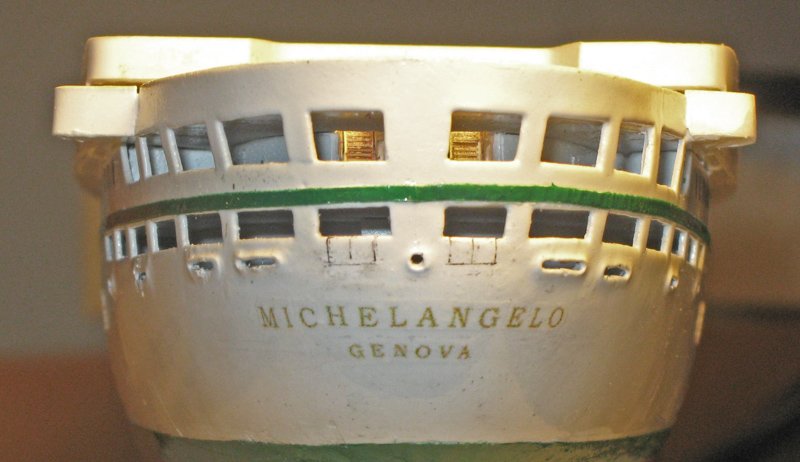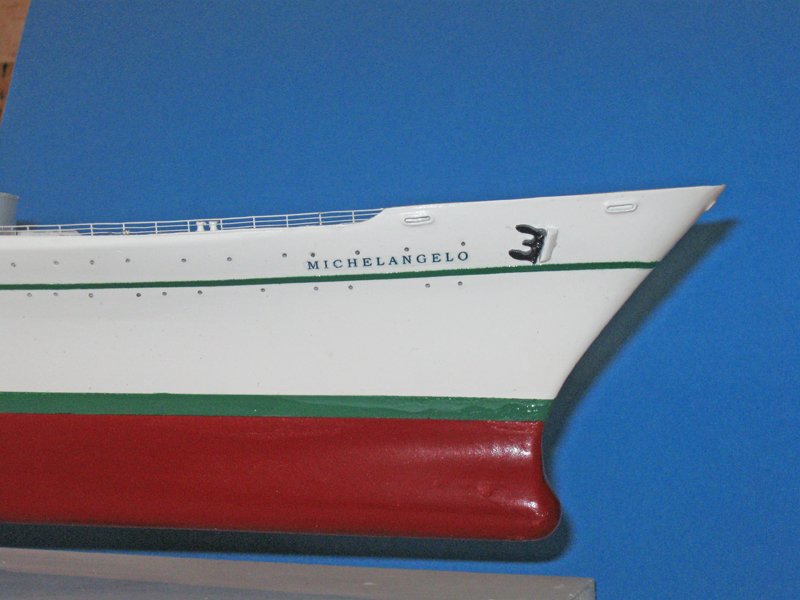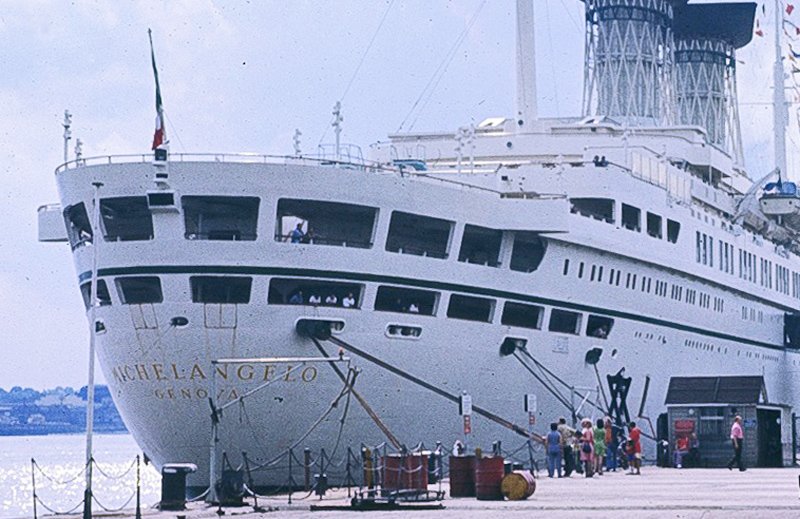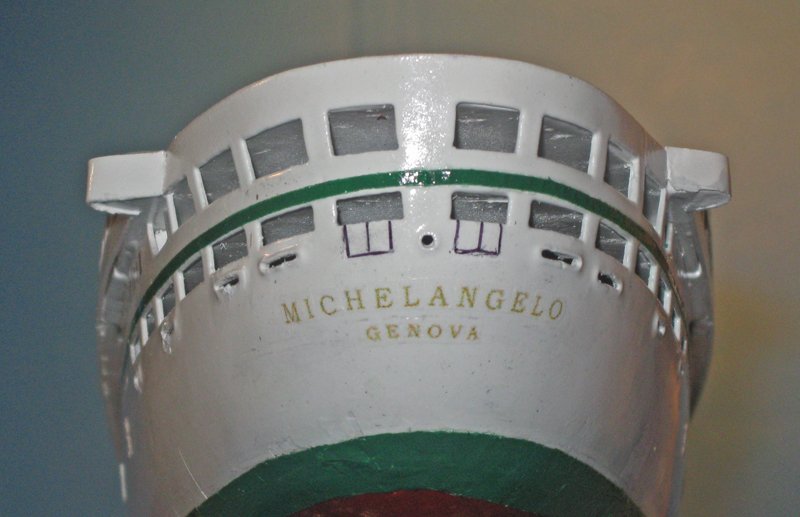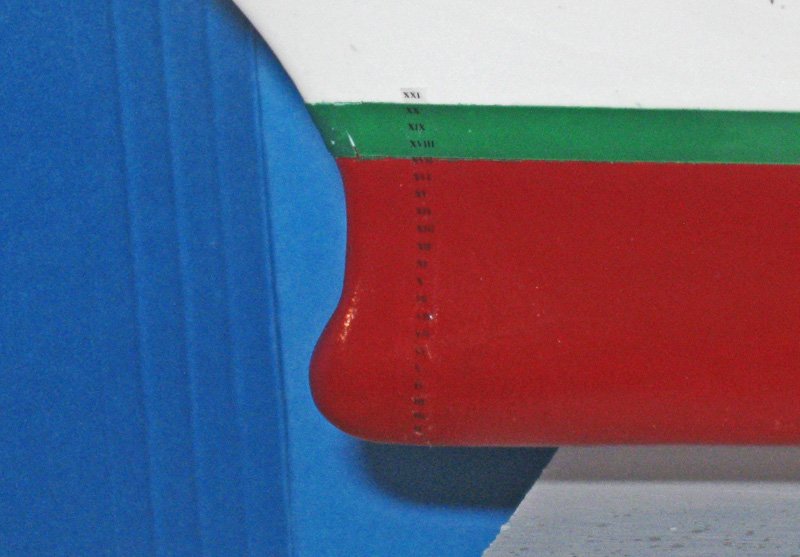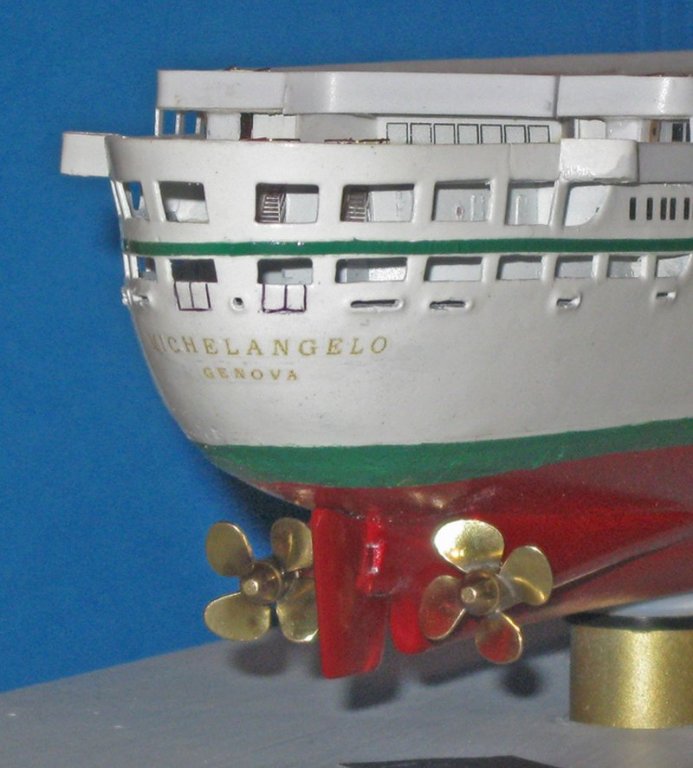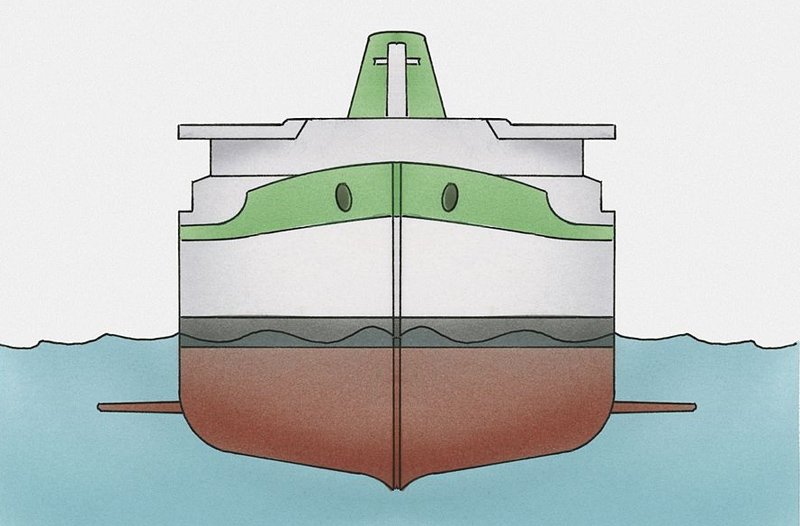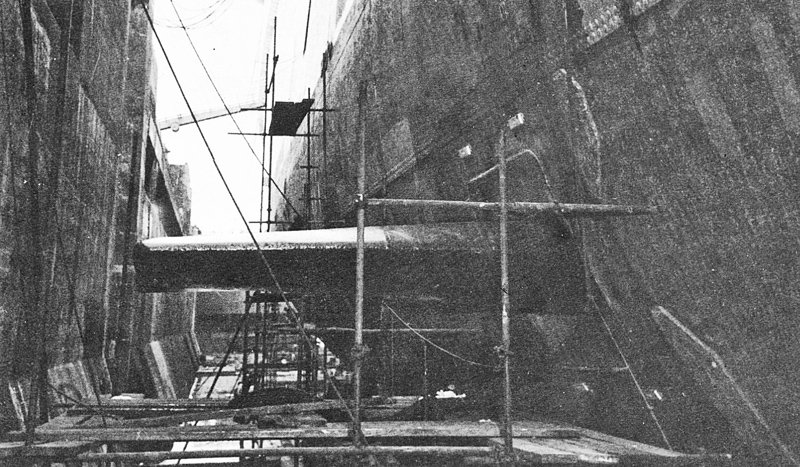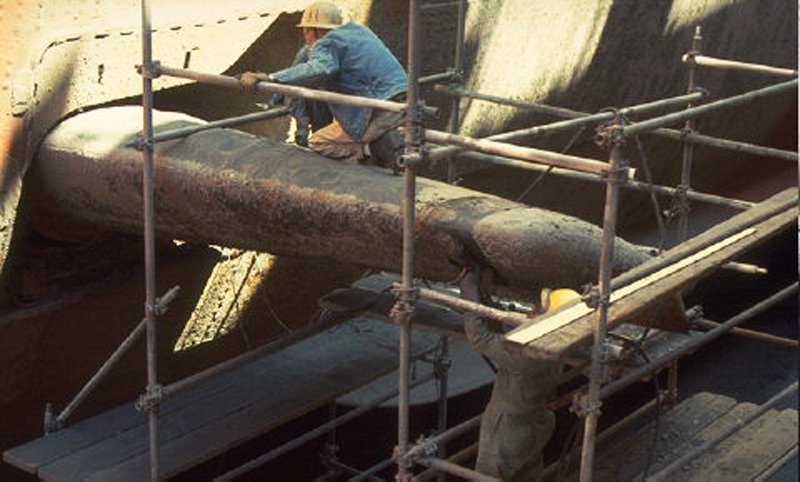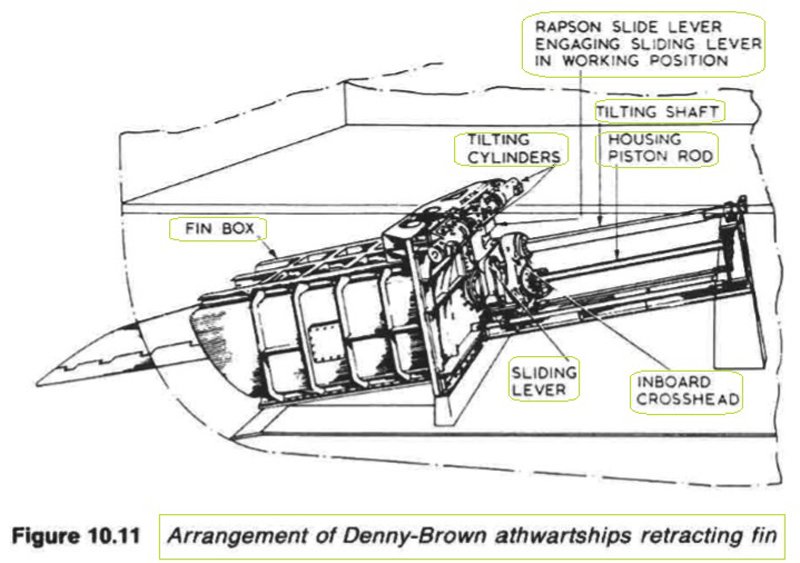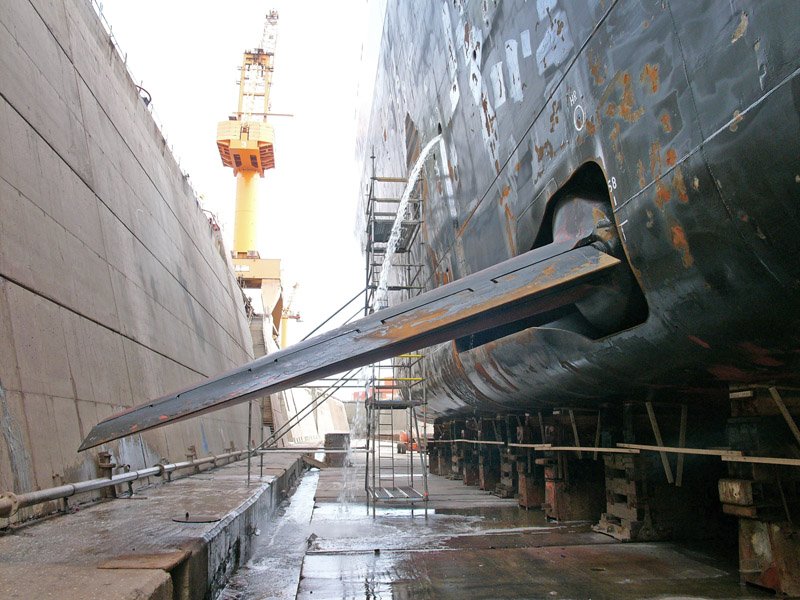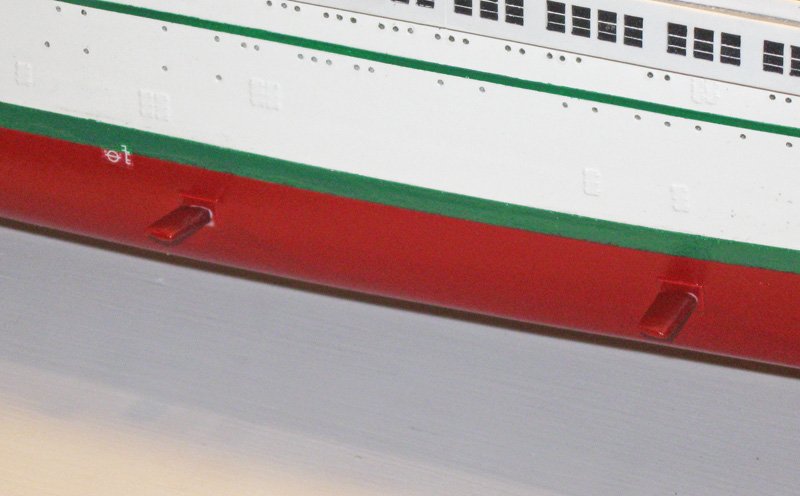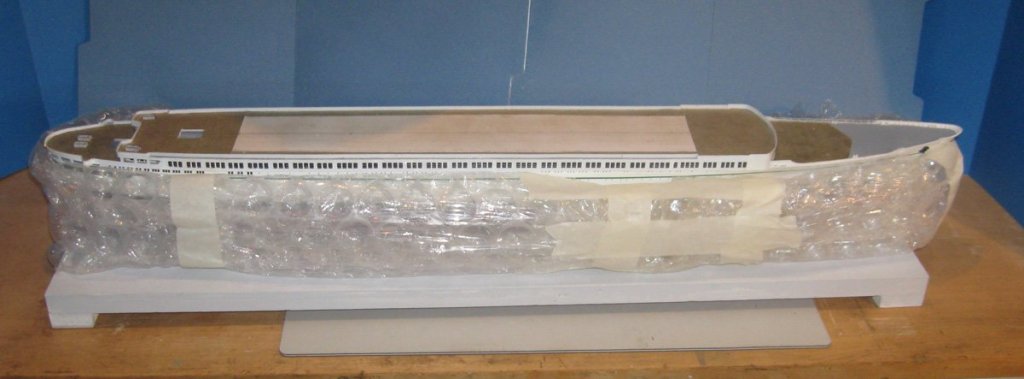-
Posts
936 -
Joined
-
Last visited
Content Type
Profiles
Forums
Gallery
Events
Everything posted by shipmodel
-
Maury - The new rudder looks great. Sorry if my post had you doing extra work, but the improvement is noticeable. Happy Thanksgiving to you and yours. Dan
- 525 replies
-
- anchor hoy
- hoy
-
(and 1 more)
Tagged with:
-
If you trust your skill in softening the pieces, could you try to stretch them a bit? This would lengthen them and also flatten the arc. Does that make sense for the kit? Dan
- 2,623 replies
-
- heller
- soleil royal
-
(and 9 more)
Tagged with:
-
Marc - Very nice solutions to the fitting issues. As has been said, those few slight kinks in the run of plans and wales will never be noticed behind the headrails and rigging. Well done! Dan
- 2,623 replies
-
- heller
- soleil royal
-
(and 9 more)
Tagged with:
-
Thanks John, Nils, Marc, and Keith, and everyone who liked what I have done so far. This build has turned out to be much more interesting than expected, and I trust that it is presenting some information and techniques that are not so usual for this site. Dan
- 287 replies
-
- michelangelo
- ocean liner
-
(and 1 more)
Tagged with:
-
Hi Maury - Really nice work on an unusual subject. I like how the deck beams and underlying structure is shown, and how clean your masting is coming along. I do have a bit of an issue with your rudder. I may be mistaken, but with the angle that appears to exist between the rudder blade and the rudder head, I do not think that your rudder can turn. With this kink, as the rudder blade pivots on the pintles and gudgeons, the rudder head would have to move in an arc, side to side. But you have the rudder head going through a large block that fits tightly around the rudder head, giving it nowhere to move. This may be an artifact of the photograph, but you probably should check it. Dan
- 525 replies
-
- anchor hoy
- hoy
-
(and 1 more)
Tagged with:
-
Hi again to everyone following or looking in - So I did, ultimately, cut the anchor winch platform in half and insert a 4mm matching piece in between. Like the rest of the platform it is a sandwich of 2mm hardwood with a top layer of 0.05” black plastic. The bottom was ground to the proper slope angle and glued to the deck and to the winches. The chain stoppers were further reduced in size by about 20%, and maybe a bit more on the handles. Now the threaded rod is 0.025” and the handles are 0.009” wire. For the hawse hole covers I made them up as a frame with a flat cover without any details. I decided that simplicity was best here since I still do not know exactly what they looked like. The changes are not especially noticeable, but in comparison I think they match just a bit better to the actual ship layout. So here is the bow deck complete with the fittings secured. I also added the small rounded platforms for the mate to stand on when mooring the ship. You can see the starboard one stowed against the bulwark just above the hawse cover. It flips up and extends out past the bulwark edge to give him full view of the dock and the ship. You can see it extended in the photo of the ship, above. The final fitting is a platform and railing at the extreme bow, with the ensign staff mounted in it. I felt that it was too exposed and likely to catch my careless fingers, so it will be installed near the end of the build. And here is a view of the entire working deck. Nothing in it draws my eye as being out of scale, so I am content for the moment. I hope everyone is equally content with their projects, and that you and your families all enjoy a healthy and happy Thanksgiving. Dan
- 287 replies
-
- michelangelo
- ocean liner
-
(and 1 more)
Tagged with:
-
Congratulation! Glad it came out so well for you. Looking forward to the photos. Dan
- 2,623 replies
-
- heller
- soleil royal
-
(and 9 more)
Tagged with:
-
Hi Marc - My experience with plastic is that most of the stuff used by kit makers will resist softening until it is right on the edge of melting. Once melted, there is no going back. I would start out with the most gentle heat I could apply. The quickest to try would be Joyce's hair dryer on the lowest setting, and just up the power if it doesn't work at first. But I remember that when my eyeglasses are fitted they often dip the earpieces in hot sand. That would be my next experiment. You might also make kerf slots in the plastic of the interior side of the hull piece that you are trying to bend. It will make the bending go a lot easier, whether you are trying to open up the curve or close it. Dan
- 2,623 replies
-
- heller
- soleil royal
-
(and 9 more)
Tagged with:
-
Hi all - Thanks for the likes and comments, and especially to John for the explanation of hawse pipe covers. i didn't know such a thing existed, but it makes perfect sense. I did a quick search for an image, but only found examples for much smaller boats. I am sure a photo exists, but I haven't found one yet. Dan
- 287 replies
-
- michelangelo
- ocean liner
-
(and 1 more)
Tagged with:
-
Hi all - Here is the next step in the journey. With the wooden decked portion of the bow deck done, I moved on to the forward area which was covered in just a composite waterproof material. This area housed the ground tackle – the anchor machinery and the mooring equipment and lines. Its color is quite variable. In the first photo it looks dark brown, while in the second is a light grey, while another is a pinkish tan. The medium grey is the most common, so that is what I went with. Some of the fittings here are familiar. Five of the seven bollards are the same as on the cargo area of the deck, but the two which flank the anchor winches have small nipples on the forward posts. Here is a photo from the ship, taken in NY harbor after the wave damage, and the fittings for the model with the two unusual bollards to the right. The small mooring winch is similar to the two on the cargo deck, but the base is different. In the photo, taken at the breakers’ yard, it is supported on a flanges and looks like it leans forward. In fact the winch is vertical, the tilt is just to compensate for the upward sheer of the deck. The model fitting was built up from a metal casting, a wooden base and styrene flanges. The photo showed me that it needed some more touch-ups before final installation. In the center of the deck is a companionway leading down into the engineering spaces under the deck. It has a complex shape, with angled sides and an angled forward face. There is a doorway on the aft face that is framed by protective barriers. You can see it in the two overall photos at the beginning of the segment, and here is a close-up. After a few initial missteps, the model piece was built up from a wooden core with my usual styrene sheathing and photoetched door. The most complicated bits of machinery on this deck are the two anchor chain winches. They are not detailed at all on the plans, so a great deal of information had to be gleaned from the photographs. Unfortunately, very few showed these features from viewpoints that would have yielded a complete idea of what they looked like. You can get the general look from the two overall photos, above, and here is a bit closer view from ahead. After studying these and other photos, I believe I know most of the details. The machinery seems to consist of two large round winch heads that sit on a wide raised platform. Like the base of the small winch, this platform tilts forward relative to the deck so the winch heads are vertical. A sloping ramp leads the chain up from the hawse hole and into a covered tunnel under the winch head where it is pulled around and then fed inside a large elbow and down into the cable tier. Along the way it is straddled by a fitting with two vertical arms that are connected by a bar with some sort of handles on each end. I found out that these are called chain stoppers, whose purpose is to clamp onto the chain and take the strain off of the winch from the weight of the anchor. Here is a smaller one, but the elements are the same, and it is easier to understand what is going on. You can see how turning the handle would turn the bar with opposing threads, closing or opening the hinged arms to trap or release the chain. So here is my latest iteration of the machinery. Each element was built up from whatever materials came to hand, including hardwoods for the platform and ramp bases, plastic channel for the tops of the ramps, wood and metal for the winch heads, bits of plastic for the base and arms of the chain stopper, and iron wire for the threaded bar and handles. The ramps are not yet attached to the winch platform, so the chain does not connect them. This will be done at final installation. There is one feature which I could not figure out. The photos show that the hawse holes are not simple ovals with lips, but seem to have some sort of covering. Unfortunately, this is the most detailed photo I found of the fitting. I will keep hunting, but if nothing further is available, I will fake it as I make it. So here is my first dry fit of all the components except the hawse holes. I added the chain return elbows to the anchor winches and set the fittings in place. Everything seems to fit pretty well and they tell a convincing story of how the ground tackle was laid out. However, when compared to the photo, and although I am getting close, there are some significant issues. The biggest is that the anchor winch heads are too close together. I am still debating whether to cut the platform along the centerline and piece in to make it wider. Is this too much work, and too risky, for not much gain? Also, the chain stoppers are still a bit overlarge and clunky, especially the handles. Is this getting too picky in a component that is barely a quarter inch across? Final details and improvements – or not – next time. Be well. Dan
- 287 replies
-
- michelangelo
- ocean liner
-
(and 1 more)
Tagged with:
-
Hi Ken - The rails in Tom's 3501 set are all 0.125". I also have his 3584 (IJN 2-bar rail) whose rails are slightly less at 0.120". I do not have 3583. Gold Medal Models merchant ship fret has rails also of 0.120". GMM's fret is much larger than Tom's so the rail lengths are longer and there are more ladders and stairways as well. I have had great customer service from both Loren Perry at GMM and Rich Harden at Tom's. Don't know what your communication problems are. Try Rich again at tomsmodelworks@aol.com Hope that helps and best of success, the model is turning out beautifully. Dan
-
Keith - As a student of rigging and its techniques, it is a pleasure to watch you work. Dan
-
Hi guys - Glad you liked the tale of the great wave. Sometimes it is pointed to as a piece of the reason why the liners gave way to the airlines. For me, the story of the hubris of John Stienbach and his swift karmic punishment is another small facet of the wide, wild, wacky, woeful, and wonderful diamond that is the human experience. Preserving these stories in three dimensions is one of the central reasons why I choose to model ships. As for the small scale, Keith, it is all done with lots of magnification and lots of light. Glad that the photos let you enjoy the nano-journey. Dan
- 287 replies
-
- michelangelo
- ocean liner
-
(and 1 more)
Tagged with:
-
I don't know if you will have to make any more cuts like those, but if you do, a razor saw with a wide blade is your friend here. Dan
- 2,623 replies
-
- heller
- soleil royal
-
(and 9 more)
Tagged with:
-
Hi Mark - Good to see you back. Progress is looking good. As for the sanding wheel, that is an ingenious solution to the problem. I did not think of it, but bought flap-wheel sanders from Dremel - Product EZ474SA gives you both a fine and a coarse wheel for under $8 at Amazon. I have them and they are wonderful to use once you get used to using a light touch. Dan
-
Hi Nils - Good catch on the twist. Check, check, and then check again usually works. If I may suggest - mist with water the areas subject to the greatest torque while they are under strain from your weight. That might help the wood accept the new configuration and lessen the tendency to spring back over time. To check, lay several rods across the bulwarks perpendicular to the centerline. I have always called these 'winding sticks' although I do not know where the term came from. Sight over the tops of the sticks and they should all be parallel to each other. Otherwise, excellent progress. I am thoroughly enjoying watching your build as it goes forward. Dan
- 692 replies
-
- eagle of algier
- chebec
-
(and 2 more)
Tagged with:
-
Hi Pat, Druxey - Well, whether a breakwater or not, it famously did not do its job. I was going to tell this story later, but this seems a perfect segue - - - On April 9, 1966 the Michelangelo left Genoa on a routine cruise to New York City with 775 passengers including German novelist Gunter Grass and the creator of Archie comics, Bob Montana. After stops at Cannes and Gibraltar it turned into the Atlantic at its normal cruising speed of 26 knots - and directly into the path of a hurricane. The weather worsened quickly and steadily and by the morning of Tuesday the 12th the ship was being tossed around like a toy, despite significantly reducing speed. The ship shuddered every time the huge rollers slammed into the bow. Terrified children screamed and clutched their parents, who were not any less scared. Anyone trying to take comfort in any of the lounges faced injury from tables and chairs being thrown across the room. Bob Montana recalled, “The waves looked like apartment buildings. I was worried about how much the ship could take. The ship was not just rolling and pitching – it shuddered. Things jumped, everything fell onto the floor.” At around 10:00 a passenger, John Stienbach of Chicago, dared other passengers in the first class lounge to join him in his suite which had windows in the forward superstructure facing the bow. No one took him up on his challenge, so he went alone. Twenty minutes later the ship lifted on another huge wave and dove into the trough behind it. Before it could lift the following wave, a huge 60-foot wall of water, crashed over the bow – tearing over the puny breakwater – and slammed into the face of the superstructure. All of the forward facing windows were blown out in a hail of glass shards which injured, among others, the captain on the bridge some 70 feet above the deck. John Stienbach was killed instantly. Two others died of their injuries and 50 more were injured but survived. Someone, possibly even Stienbach himself, took a series of photos of the bow driving into the waves. This is not the fatal wave, but you get the sense of what it must have been like. It is ironic that these are some of the best photos for determining the exact details of the fittings on the bow deck: The superstructure below the wheelhouse was buckled and caved-in by the force of the tons and tons of driving water. The ship’s stem was bent backwards while metal bulwarks and over 100 feet of railing were ripped out of the deck and carried into the sea. Damage to the interior cabins, lounges and saloons was massive. The aluminum skin of the ship was ripped open and a hole appeared in the forward bulkhead 45 feet wide and three decks in height. The open deck at the bow had various fittings, strong enough to handle the anchors and mooring cables, torn loose or damaged. In this photo taken from inside one of the lounges you can see how the port bulwark is damaged and the starboard bulwark has been ripped away. Four days later, with the damage to the bow mostly hidden by a tarpaulin, she limped into New York harbor and into her pier. After disembarking all of the injured to ambulances the shaky passengers went down the gangways and the ship went to the Bethlehem Steel shipyard in Hoboken where 115 craftsmen worked around the clock to make repairs. In only four days the ship was ready to embark passengers again for a return trip to Italy. Of the shipyard workers, Michelangelo’s captain would say, “They worked beyond expectancy, so quickly without giving us any problems – they just did it.” The ship continued in the trans-Atlantic trade for another nine years until the governmental subsidies which had kept the Italian Line running dried up. Like many other obsolete luxury liners she was considered as a hotel, as a yacht for billionaires, but was ultimately purchased as a barracks ship for the Shah of Iran in 1977. She outlived her purchaser, but in 1991 she met her end on a breaker’s beach in Pakistan. Sic transit gloria mundi. So passes the glory of the world. Dan
- 287 replies
-
- michelangelo
- ocean liner
-
(and 1 more)
Tagged with:
-
Druxey - "Two peoples divided by a common language . . . " W. Churchill Dan
- 287 replies
-
- michelangelo
- ocean liner
-
(and 1 more)
Tagged with:
-
Hi all - It was really nice to see several of you at the NRG conference in St. Petersburg last weekend. The conference was very enjoyable with lots of good models, informative talks and roundtable demonstrations. And, of course, it is always great to see and chat with modelers whom I would only otherwise know as a screen name. With the lower hull done I could start adding details to the decks. Many of the elements have already been prepared while I was working on the hull. The first details to be added were the margin planks around the edge of each deck and deck openings. Here you can see this around the fantail deck, Promenade and Upper decks, and the stairway openings in the three decks. The difference is striking when you compare those to the stairway openings in the topmost Lido deck, which have not been done yet. The margin planks are made by carefully slicing one plank from the sheet of paper decking with a metal straightedge and sharp blade. The ends of the strip are miter cut diagonally and softened with a misting of water before being attached with pH neutral white glue. This is only done where the margin plank crosses the line of planking. Where the opening is along the planking no margin plank is used, since the eye cannot distinguish their absence without significant magnification. At the bow a margin plank was installed along the edge of the working deck to set it off from the gutters that border the bulwarks. Another was carefully worked into a curve around the base of the Promenade deckhouse. These planks are barely visible, but without them the deck looks unfinished and the deckhouse seems to float above the deck below. Now I turned my attention to the machinery and fittings of the working deck at the bow. From the plans you can see how many different kinds there are. The side view does not have a great deal of additional information, but it shows how tall the deckhouse and other elements are. However, many of the fine details are not shown on either plan. To fill in the gaps I found a number of high resolution photographs which together show almost all or portions of the deck and the fittings. Here is one of the most useful ones showing the entire layout. It is even in color. You can clearly see the separation between the wooden deck with the cargo winches and hatch, and the composite deck with the anchor winches and ground tackle fittings. The first bit of detail that I started with is not shown on any of the plans, but in the photographs it is clear that there is a metal handrail across the face of the Promenade deckhouse between the several doors. I made it from .011” wire which was straightened by rolling between two hard surfaces. The pieces are attached with small drops of cyano fed to the wire with a toothpick as I hold it in place. After I was satisfied with their placement, the handrails were painted with clear finish to help hold them secure. Along the edge of the deck there is a scallop in the bulwark that is protected by a metal railing. Photoetched 4-bar railings were sourced from Gold Medal Models and sprayed white. On each side the railings were test fit and adjusted so one section set up just where a small fairlead had to sit, just forward of the wooden deck. The lower two bars of each railing were carefully cut out at that location and secured with both cyano and white glue. The 2-post fairleads, like the larger 3-post ones, were originally Bluejacket metal castings that underwent some radical surgery before being filed and sanded to final shape. On deck, the major eye catching element is the deckhouse. The plans only give a general idea of how it looks, so I turned to various photographs that had sufficient resolution to help. They gave me almost all of the details, and I puzzled out the rest. Here is how it came out. The most complicated area is at the forward end where the structure is not only curved, but angled as well. This face leads to a winch control platform with four handwheels on stands protected by a breakwater that not only curves, but is angled forward. Small sets of steps lead up to this platform from either side. The sides have doors and what appear to be awnings that can be opened if desired. The roof has a photoetched railing and a pair of ventilators made from styrene rod and tube. At the base you can see a brown edging. This was a feature of almost all of the structures, railings and bulwarks on the ship. It was applied with an indelible marker and overpainted with a clear finish for protection while handling and for UV protection on the model. Here it is installed on the centerline of the deck. It had to be very precisely located, so slow setting white glue was used which gave me the time to adjust and readjust. Once it was securely in place the back and wing edges were defined with margin planks. The next major fitting was the large cargo hatch aft of the deckhouse. Like the deckhouse, the overall size and shape were taken from the plans, but the details of the angled support pieces and the lifting mechanism were taken from photographs. (Sorry that the photo is a bit out of focus.) Most of the other elements started life as Bluejacket castings, but were extensively modified and/or cleaned up before painting and mounting. Here are (clockwise from upper left) the spare anchor, the large round winches, four small cargo winches, and a set of bollards. The final elements in this area, other than the cargo boom cranes, were the breakwater wings that extend from the sides of the deckhouse towards the bulwarks. They were built up from styrene strip with triangular buttress supports and a horizontal bar that was cut into the supports. The cargo cranes stick up and would be in danger of being broken off during construction, so they were left off until a later time. So here is that area with all its fittings in place, including the railing gates at the ends of the breakwater. And for size comparison, here is the area with my patented 6-inch diameter dime. Next, the fittings for the forward part of the working deck. Until then . . . Be well Dan
- 287 replies
-
- michelangelo
- ocean liner
-
(and 1 more)
Tagged with:
-
Hi Marc - Nice ingenious solutions to the problems of lengthening and widening the stern. They should work out well and the surgery should be invisible in the final model. Well done, mi amigo. I still have a problem with the outward flare at the top of the taffrail, but we have been through that and I respect your decision. See you soon. Dan
- 2,623 replies
-
- heller
- soleil royal
-
(and 9 more)
Tagged with:
-
Hi Chris - Looking forward to following your progress from the beginning. With such an ambitious building timeline it should be quite the project. One small word of caution - as much as I respect the work and scholarship of M. Budriot, I have found some significant issues when working with his monographs. He has a tendency to re-use his drawings from the 74-gun ship project for designs of smaller ships by simply reducing them in size, without taking into account the fact that humans cannot be similarly reduced. So check headroom clearances, ladder riser heights, and similar details before incorporating them into your model. Best of succcess. Dan
-
Hi again – Just a quick note. In the last segment I was uncertain about how the stern access doors were represented. Even though they are just 2mm x 4mm, the dark lines were visibly jarring. Others noted this as well, and one sent me a private message with his opinion that the doors did not match the quality of the rest of the work. He was, of course, correct. Taking that to heart, I removed the inked lines and, after several experiments, replaced them with lines drawn with a sharp, soft pencil guided by a flexible straightedge. Below, the before and after photos. I think you will agree that the look of the doors has been substantially improved even if, under magnification, they are still not perfect. On a side note, I want to thank the modeler who was brave enough to put forward a criticism of my work in a timely manner. Although I do appreciate and cherish the compliments and likes, we are none of us perfect. Certainly not me. So if you do see something that you think can be improved, please, Please, do not keep it to yourself. If I have stopped at ‘good enough’ I need my feet held to the fire until I go back and make it ‘good.’ PS - since I saw it under magnification, I removed the little green tab that sticks up from the green sheer stripe just to starboard of the doors. Not a big change, but I felt better after doing it. Thanks again. Dan
- 287 replies
-
- michelangelo
- ocean liner
-
(and 1 more)
Tagged with:
-
Hello again to all – A rewarding installment this time. No major problems at all as I finished the lower hull. While I was waiting for various deliveries during the boot topping odessey I worked on the hull details. The first were the two stowed anchors. These started life as Bluejacket castings, but were cut and ground to proper shape as shown in photos of the ship. They are not inset into the hull, as on most liners, but mounted on a triangular cleat and held with the stock in the hawse pipe. The ship’s name is a decal made on my ink-jet printer using a white decal sheet made by Testors. Clear sheets also came in the packet, but my printer works less well on it than on the white. You may have noticed during the last installment that the name appeared and disappeared out of sequence. That was because several were made, tested and rejected for one reason or another. It is not difficult to remove a bad decal with a little more water if it has not been overcoated with finish. This is the final one. At the stern the ship name is not done in black, but in gold. You can also see the outlines of the two sets of stern access doors that were mentioned earlier in the build with rust streaks coming down from the corners. The doors were simply inked on with an ultra-fine tipped marker. In the photo they look a bit too bold, so I may yet adjust them. The name and home port of Genova are decals. To get them to curve around the stern I scored between each letter through the decal film but not through the paper backing. I left a small band at the bottom to hold the letters at the right distance from each other. With careful manipulation with a small paint brush and a toothpick each letter was adjusted around the curve. Decals were made up for the plimsol mark. The mark is correct for ships flying the Italian flag, but at less than 10mm overall the letters “R” and “I” which denote the country are so small as to be almost beyond the abilities of my eyes, much less my printer. Several copies were made then varied slightly in tone before being printed out so I could select the closest match. Once the decal was applied and had dried the edges were overpainted with a bit of red and green decanted from the rattle cans. Decals for the depth marks had to be tiny Roman Numerals. They are beyond my printer, so they were ordered and installed. These were the last decals for the hull, so everyone was snugged down with setting solution and overcoated with clear varnish to secure them permanently. A pair of 20mm diameter counter-rotating brass propellers were sourced from Europe. A quick polishing with jeweler’s rouge on a felt cone and they were secured into the prop shaft tunnels that were tipped with brass collars. The rudder shape was taken from the plans and cut from 2mm hardwood. An airfoil profile was sanded into it from fore to aft. It was notched to fit the rudder hinge on the hull and a hole for a brass pin was drilled up through the rudder and hinge and into the hull. After a few coats of primer and final sanding it was painted to match the lower hull and installed. The final items on the hull are the fin stabilizers. These are small wings that take the place of the bilge keels to keep the ship from rolling. They were first reported on a Japanese cruise liner in 1933. As fixed wings they were not very successful, and were supplanted by gyroscopic stabilizers. These were too large and heavy, so they in turn were supplanted by automatically adjusted fins. It is known from newspaper reports and articles in engineering magazines that the Michelangelo had adjustable fin stabilizers, but none of my photos of the lower hull have any visible fins. I was never able to find more details, not even how large they were. Some fins are very small, and some very large, and some in the middle. Most stick out horizontally from the hull, but some angle down perpendicular to the curved hull. All modern ones are retractable to allow closer docking without the danger of damaging the fins. Some slid straight into the hull, while others, like the one in the photo, folded into slots in the hull. I found some drawings of the internal machinery of the retractable fins, and two are here just because I thought my audience would appreciate them. I made my fins from 2mm hardwood sanded to an airfoil shape and tapered from the hull outward. They are 5mm wide and 12mm long, which fits with the general appearance of fins in photos, and with my eyeball of what looks right for the size of the model. They are mounted horizontally in brass sleeves inserted in the hull. The lower hull is now complete and the model was firmly attached to its building base. This will be replaced with a presentation base once the model is finished. In the meanwhile, the fins were removed to safe storage and the lower hull protected in bubble wrap while work on the upper decks continues. So it’s off to the NRG conference in Florida. Hope to see many of you there. Be well Dan
- 287 replies
-
- michelangelo
- ocean liner
-
(and 1 more)
Tagged with:
About us
Modelshipworld - Advancing Ship Modeling through Research
SSL Secured
Your security is important for us so this Website is SSL-Secured
NRG Mailing Address
Nautical Research Guild
237 South Lincoln Street
Westmont IL, 60559-1917
Model Ship World ® and the MSW logo are Registered Trademarks, and belong to the Nautical Research Guild (United States Patent and Trademark Office: No. 6,929,264 & No. 6,929,274, registered Dec. 20, 2022)
Helpful Links
About the NRG
If you enjoy building ship models that are historically accurate as well as beautiful, then The Nautical Research Guild (NRG) is just right for you.
The Guild is a non-profit educational organization whose mission is to “Advance Ship Modeling Through Research”. We provide support to our members in their efforts to raise the quality of their model ships.
The Nautical Research Guild has published our world-renowned quarterly magazine, The Nautical Research Journal, since 1955. The pages of the Journal are full of articles by accomplished ship modelers who show you how they create those exquisite details on their models, and by maritime historians who show you the correct details to build. The Journal is available in both print and digital editions. Go to the NRG web site (www.thenrg.org) to download a complimentary digital copy of the Journal. The NRG also publishes plan sets, books and compilations of back issues of the Journal and the former Ships in Scale and Model Ship Builder magazines.


